Three parallel metalic plates each of area A are kept as shown in figure and charges q1,q2 and q3 are given to them. Find the resulting charge distribution on the six surfaces, neglecting edge effects as usual,
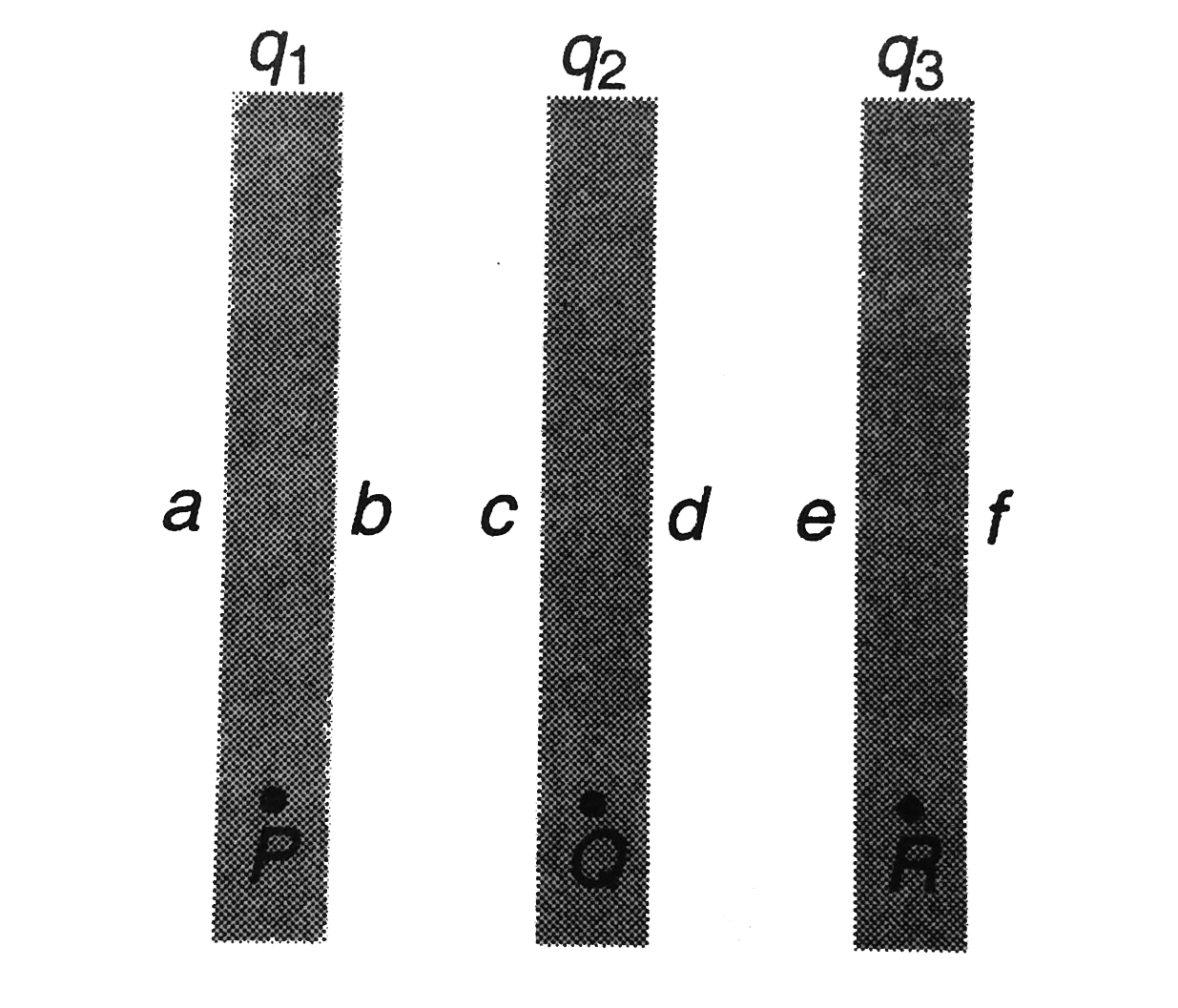
The plate separations do not affect the distribution of charge in this problem.
In the figure
q0=q1−qa,qd=q2−qc
andqf=q3−qe
electric field at point P is zero because this point is lying inside a conductor.
E=0
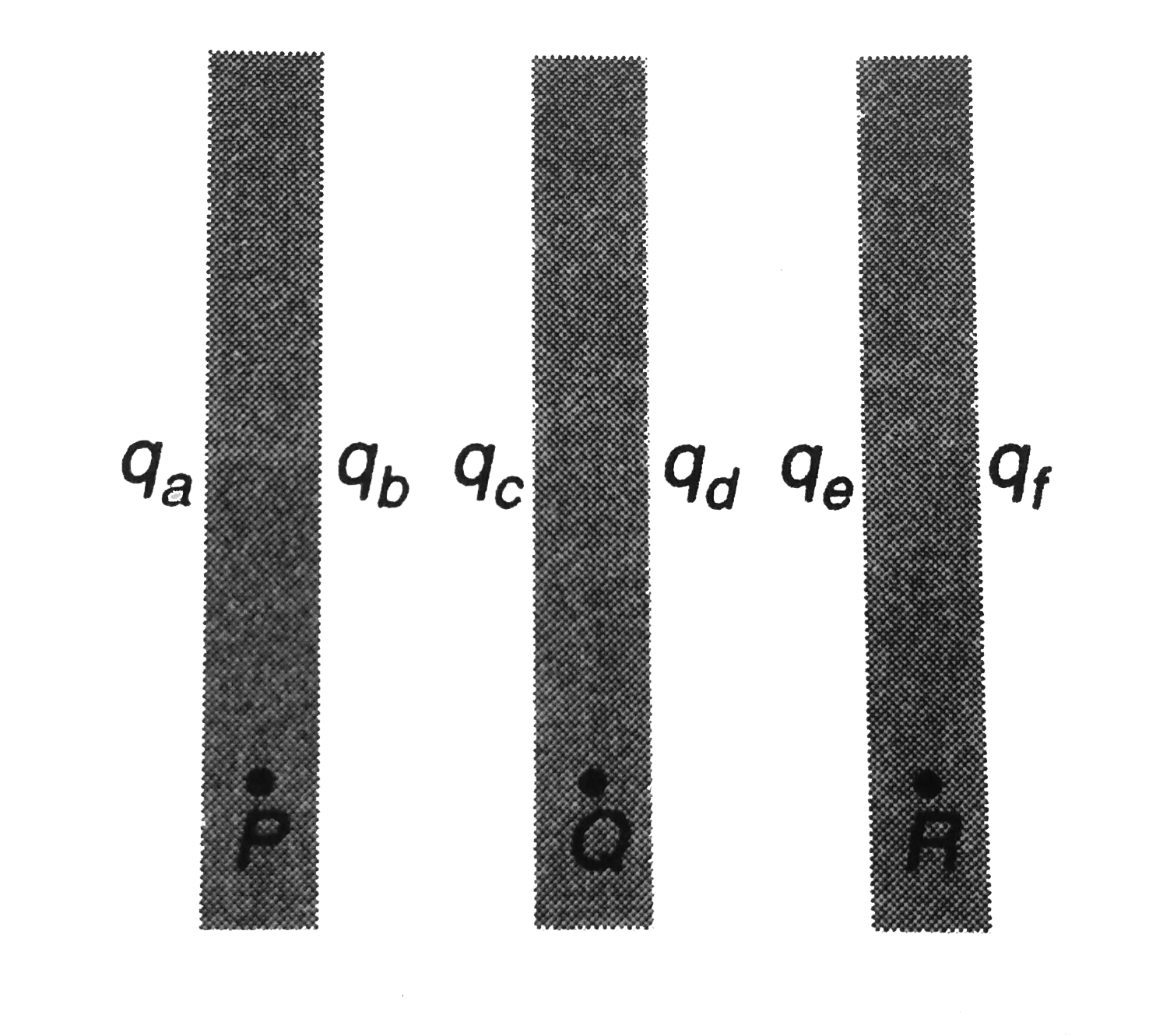
At P charge qa will give an electric field towards right. All other charges q0,qc..........etc. will give electric field towars left. So,
12Aε0[qa−(q1−q1)−qc−(q2−qc)−qe−(q3−qe)]=0
or 2qa−q1−q2−q3=0
or qa=q1+q2+q32
similarly the conditionn
ER=0
will give the result
qf=q1+q2+q32
from here we may conclude that half of the sum of all charges appears on each of the two outermost surfaces of the system of plates.
Further we have a condition.
EQ=0
12Aε0[qq+(q1−qa)+qc−(q2−qc)−qe−(q3−qe)]=0
or q1+2qc−q2−q3=0
∴qc=q2+q3−q12
qb=q1−qa=q1−q2−q32=−qc
similarly, we can show that
qd=−qe
from here we can find another important resultant that the pairs of opposite surfaces like b,c, and d,e carry equal and opposite charges.
Topper's Solved these Questions
- CAPACITORSBOOK - DC PANDEY ENGLISHCHAPTER - CAPACITORSEXERCISE - Exercise
155 Videos
- CAPACITORSBOOK - DC PANDEY ENGLISHCHAPTER - CAPACITORSEXERCISE - OBJECTIVE_TYPE
1 Videos
- ATOMSBOOK - DC PANDEY ENGLISHCHAPTER - ATOMSEXERCISE - MEDICAL ENTRANCES GALLERY
42 Videos
- COMMUNICATION SYSTEMBOOK - DC PANDEY ENGLISHCHAPTER - COMMUNICATION SYSTEMEXERCISE - Subjective
11 Videos
Similar Questions
Two parallel metallic pltes , each of tharea A are kept as shown in the figure and charges -2Q and 4Q are given to them. Edge effects are negligeble . The charges on the surface I and III are respectively

View SolutionThree identical conducting plain parallel plates, each of area A are held with equal distance between successive surfaces. ChargesQ, 2Q, and 3Q are placed on them.Neglecting edge effects, find the distribution of charges on the six surfaces.
View SolutionThree identical metallic plates, each of area A, are kept at small separations as shown. Initially, charge Q, 3Q and 3Q are given to the plates A, B and c, respectively. Now, both the switches S1 and S2 are closed simultaneously. Then Charge flown through S1 and S2 are
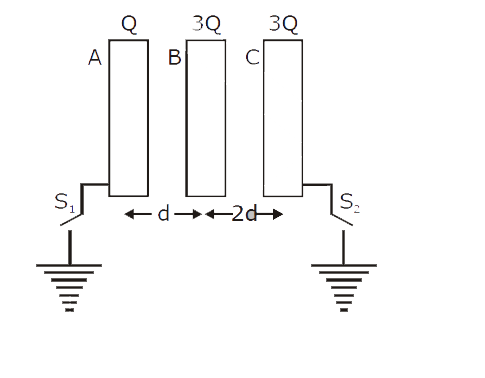
View SolutionTwo metallic plates are kept parallel to one another and charges are given to them as shown in figure. Find the charge on all the four faces.
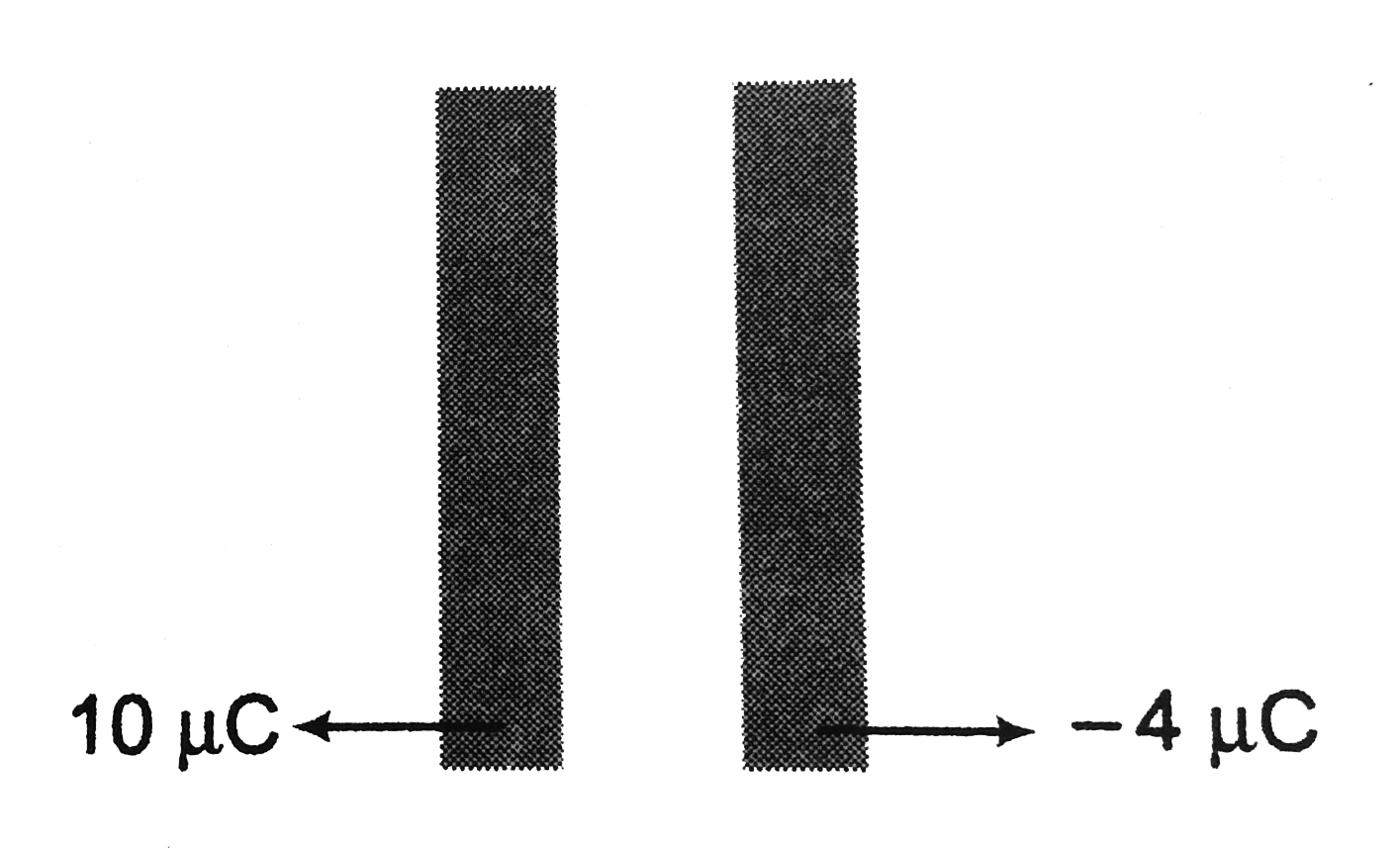
View SolutionTwo conducting plates A and B are placed parallel to each other. A is given a charge. Q1 and B a charge Q2. Find the distribution of charges on the four surface.
View SolutionThree identical plates of area A are arranged as shown. A charge +Q is given to plate (2). Then,
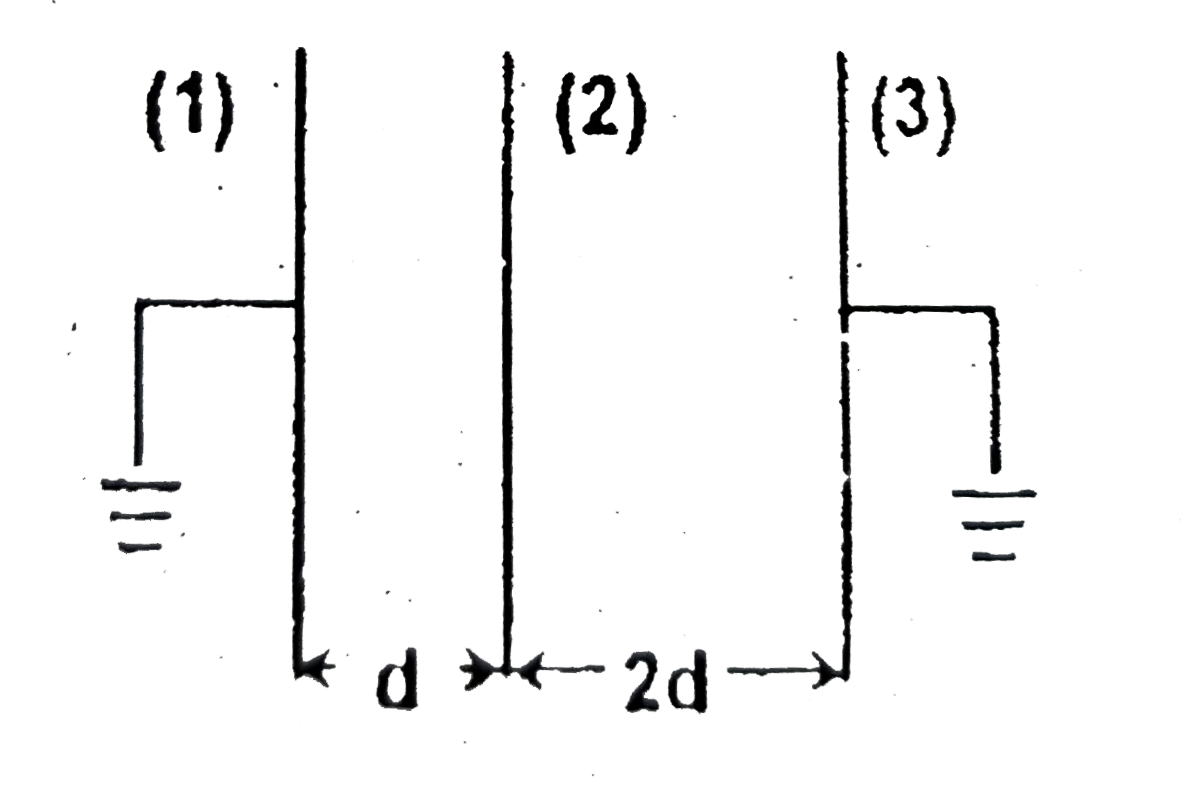
View SolutionThe three small spheres as shown in figure carry charges q1=4nC,q2=−7.8nCandq3=2.4nC. Find the net electic flux through each of the following closed surfaces shown in cross section in the figure.
a. S1 b.S2
c. S3 d. S4
e. S5.
Do your answers to parts from (a) to (e) depend on how the charge is distributed over each small sphere? Why or why not?
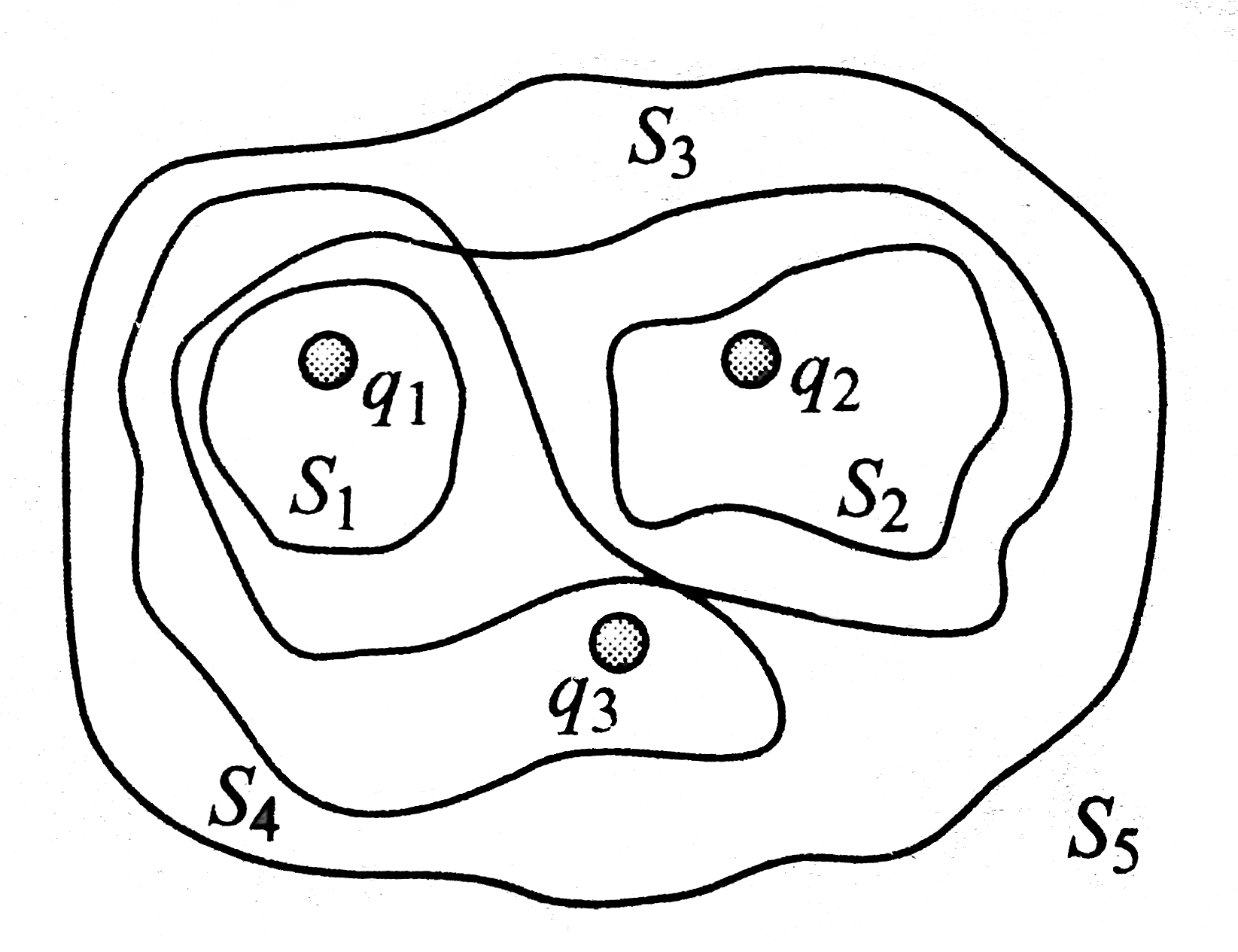 .
.
View SolutionA rubber balloon is given a charge Q distributed uniformly over its surface. Then
View SolutionFigure shows three metallic plates with charges Q, 4Q, and -Q, respectively. Determine the final charges on all the surfaces.
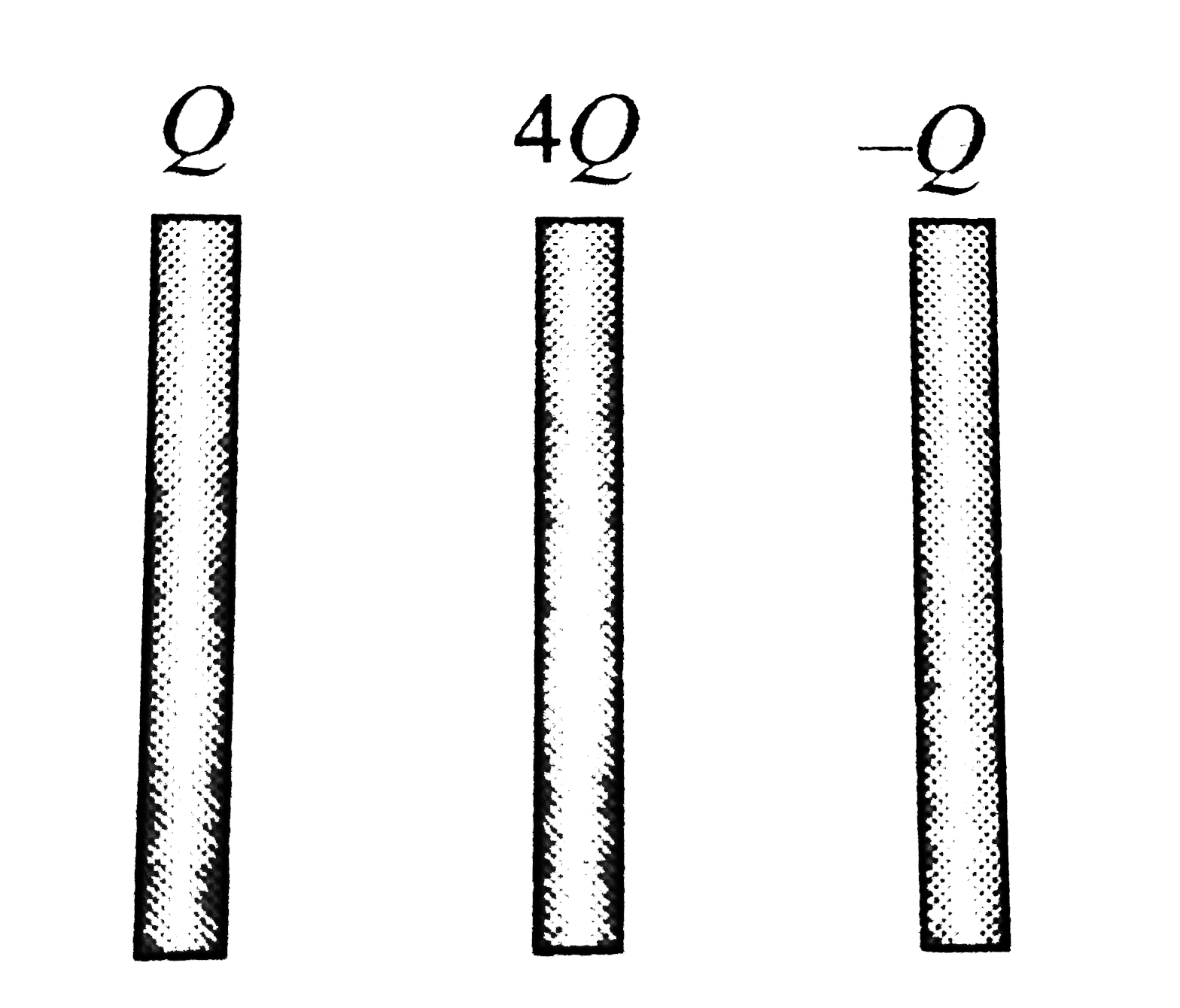
View SolutionFigure shows three large metallic plates with chrges −Q,3Q and Q respectively. Determine the final charges on all the surfaces.
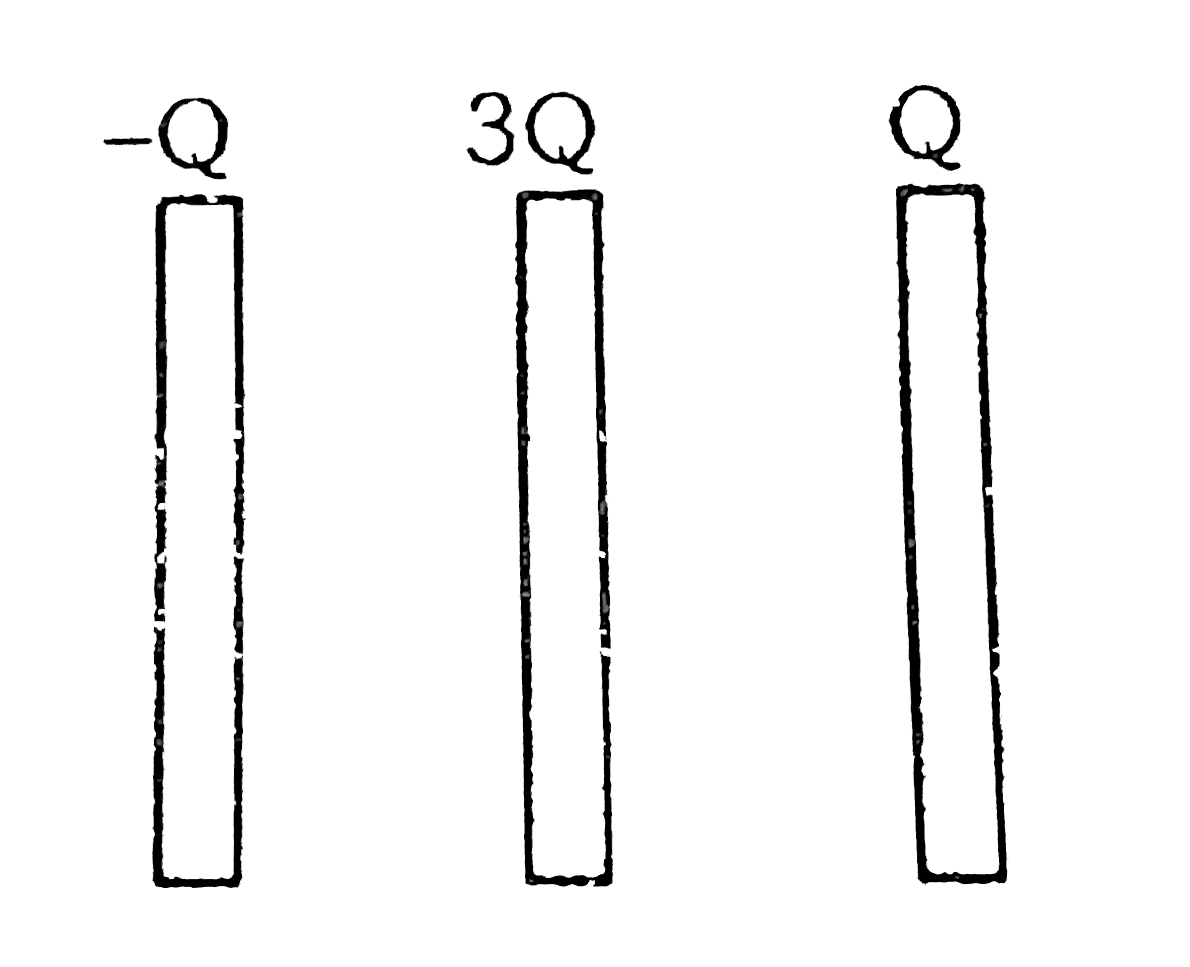
View Solution
